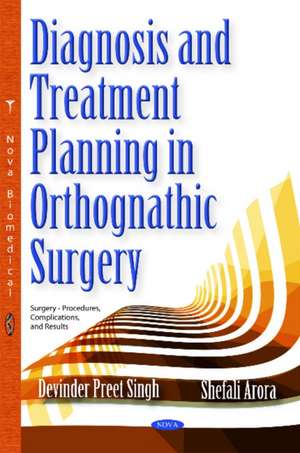Diagnosis & Treatment Planning in Orthognathic Surgery
Autor Devinder Preet Singh, Shefali Aroraen Limba Engleză Hardback – apr 2016
Preț: 1331.18 lei
Preț vechi: 1548.07 lei
-14% Nou
Puncte Express: 1997
Preț estimativ în valută:
254.80€ • 276.86$ • 214.17£
254.80€ • 276.86$ • 214.17£
Carte disponibilă
Livrare economică 31 martie-14 aprilie
Preluare comenzi: 021 569.72.76
Specificații
ISBN-13: 9781634822732
ISBN-10: 1634822730
Pagini: 130
Dimensiuni: 180 x 260 x 15 mm
Greutate: 0.45 kg
Editura: Nova Science Publishers Inc
Colecția Nova Science Publishers Inc
ISBN-10: 1634822730
Pagini: 130
Dimensiuni: 180 x 260 x 15 mm
Greutate: 0.45 kg
Editura: Nova Science Publishers Inc
Colecția Nova Science Publishers Inc
Cuprins
Preface; Introduction; Indications for Orthognathic Surgery & Deciding the Need for Surgery; Psychosocial Considerations in Orthognathic Patients; Diagnosis: Deciding Where the Fault Lies; Deriving a Diagnostic List; Surgical Treatment Possibilities; Treatment Planning; Pre-surgical Orthodontics; Definitive Immediate Pre-surgical Planning; Post-surgical Orthodontics & Retention; References; Index.




















